Visit Library for MBP Pro eBooks |
This week we conclude this series to walk you through our adventures on the Complete Namibia Tour that I ran from the middle of April 2023. We traveled north from Sossusvlei to Walvis Bay where we’d spend two days photographing the flamingoes and other shore birds. Walvis Bay was refreshingly cool after the unseasonably hot days we’d spent in Sossusvlei.
This first photo of a flamingo landing reminds me of a young Japanese girl wearing a “Furisode” Kimono, like the ones they might wear at their coming-of-age ceremony, as it’s a bit more flamboyant than the more subdued colors that a lady of slightly more advanced years might where. I was initially annoyed that I didn’t get much of the reflection, but this image grew on me, and I do like the amount of detail that we can see in the bird because it takes up more of the frame.
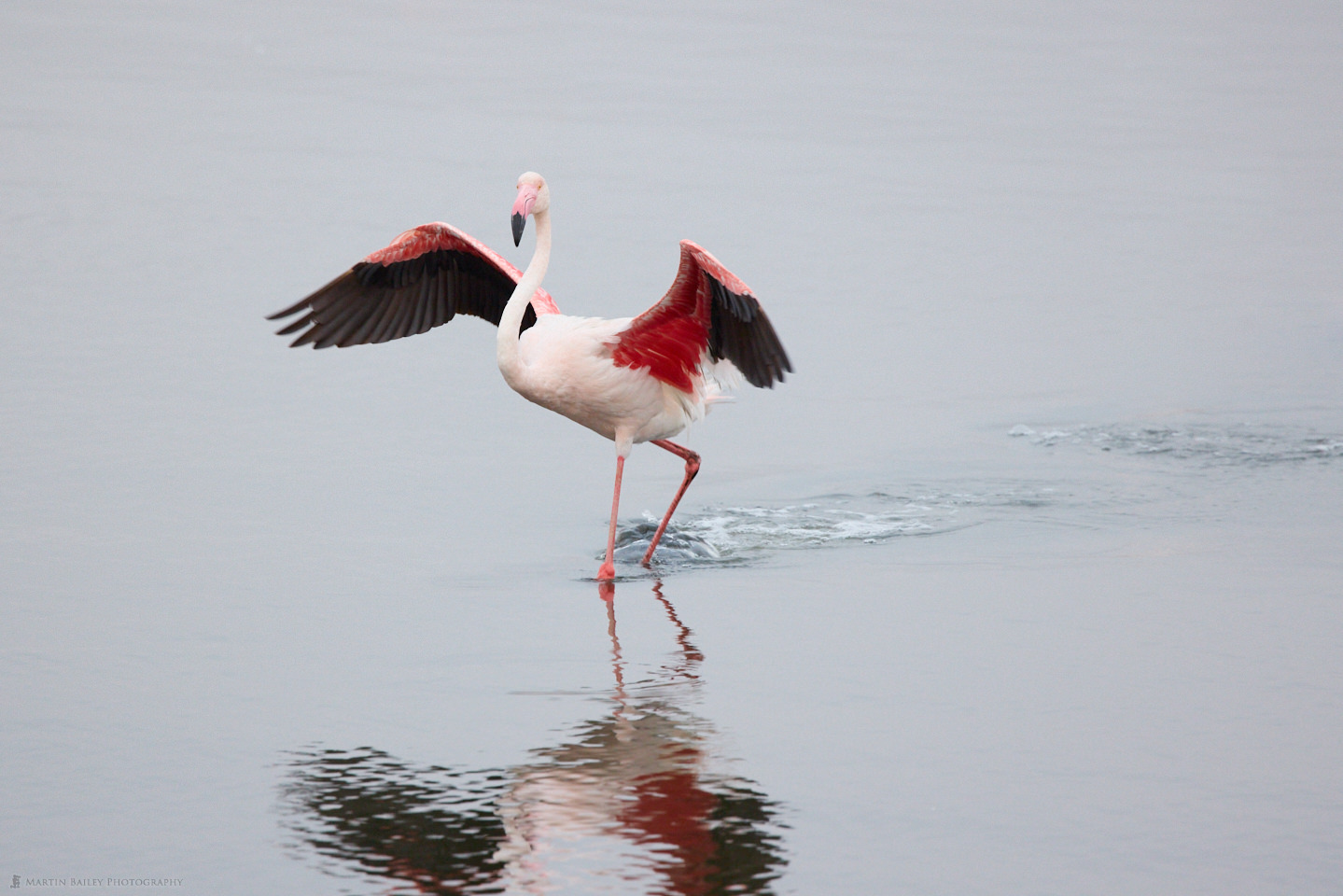
The highlight of the Walvis Bay visit is getting a chance to get the flamingoes at sunset, as you can see in this next image. To ensure that there is water covering the entire foreground I go down the beach past the mud flats, and get my camera right down to water level, and shoot using my articulated screen. This makes it more difficult to shoot, but if you keep your eye on the digital level and ensure that you are focusing on the flamingos it can be a beautiful shot. I’m still hoping for a perfect heart with two heads from flamingos at some point, but I haven’t bagged that one yet.
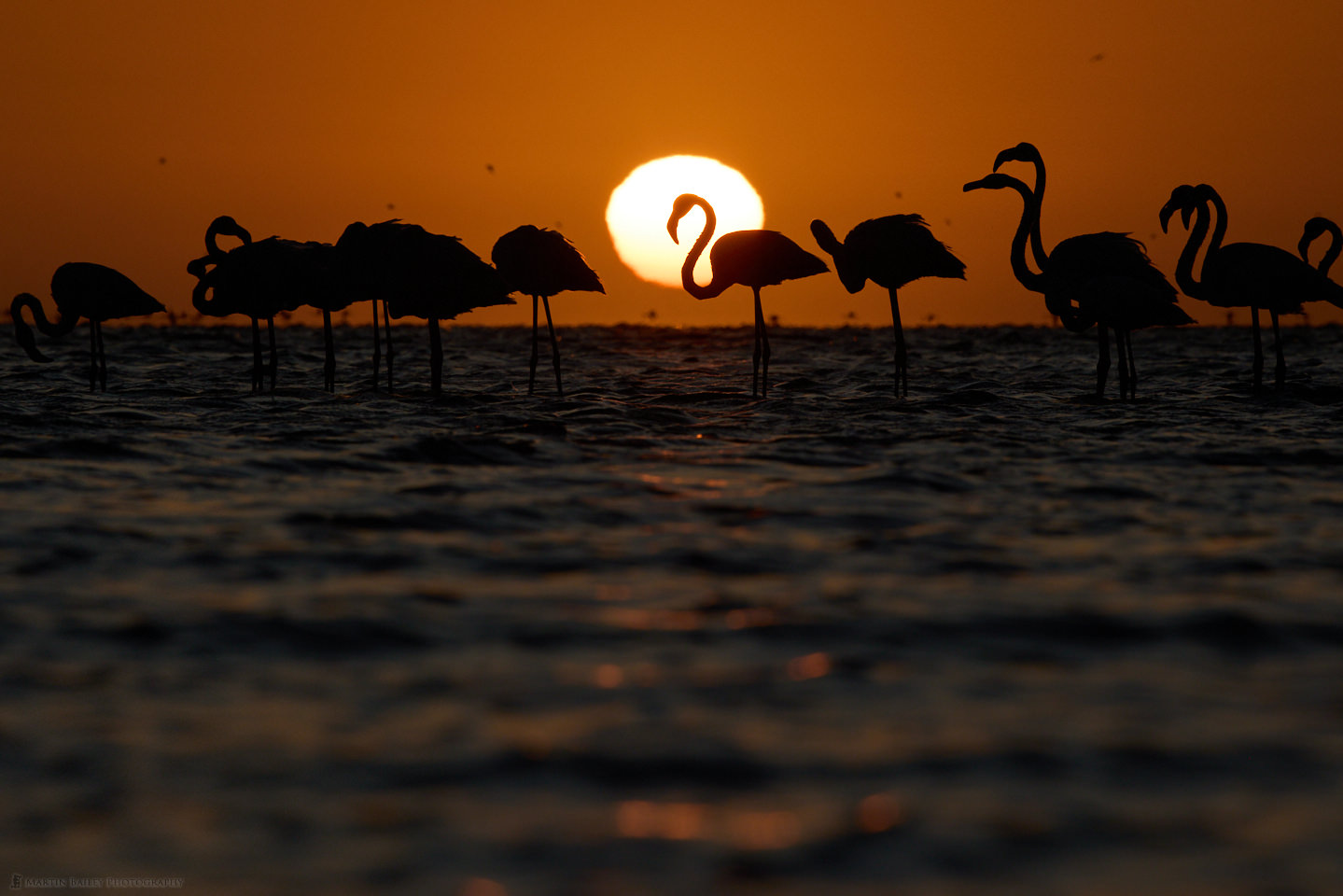
The following morning went traveled North again to photograph the Himba people in their town and on the way, made a stop at the Zeila shipwreck. I often look for something to put in the foreground and rarely find it, but this year I was relatively happy to see some kelp lying on the beach, so I included that, as you can see here.
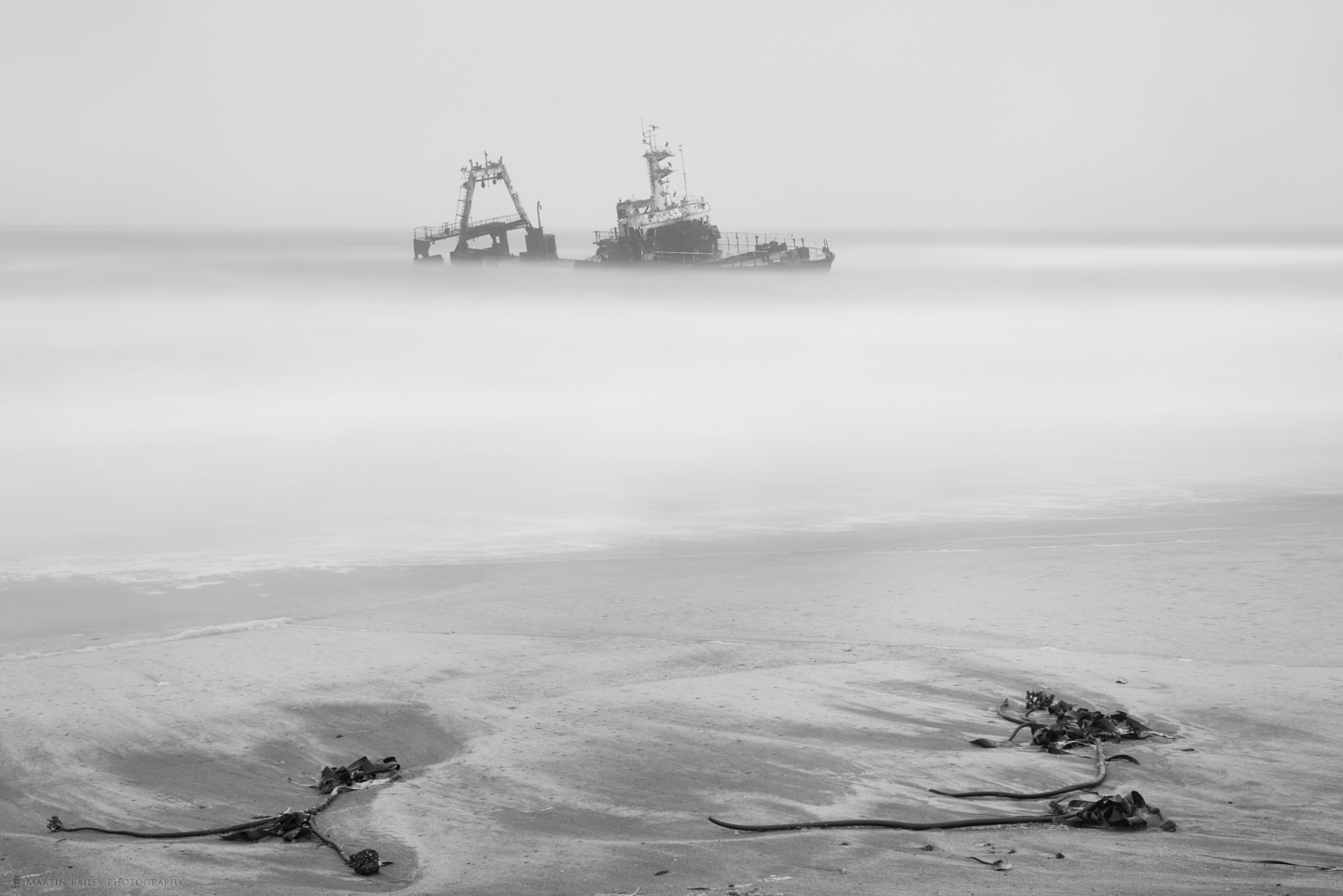
We had a bit of a shock when we got to the Himba village where they have been every year that I have visited for the last eleven years. As a semi-nomadic people I knew that there was always the risk that they would not be there, and this year, they were not. They may have moved on because of the lack of rain at the end of last year, although the valley was relatively green when we got there because of the late rains we’d seen.
I have people looking for the settlement, and we will hopefully be able to visit them during my upcoming trip, assuming they didn’t move because they had become tired of people turning up to photograph them, and that is a distinct possibility, as I know that few other visitors treat them the way we do and the way they should. There was a ray of hope when we drove into Sesfontein a little later in the day, and we noticed a sign in English that read “Traditional Himba Village.” As I’m sure you just imagined, though, it was a pretty nasty tourist trap. There were a number of Himba people there, and they were very nice, but it was a far cry from the settlement I’ve always visited. There was no sense of them living there, and the flies were unbearable. We made a number of images, some of which were nice, but I’m hoping we don’t have to return on my upcoming trip. Here are the three images that I selected from our visit.
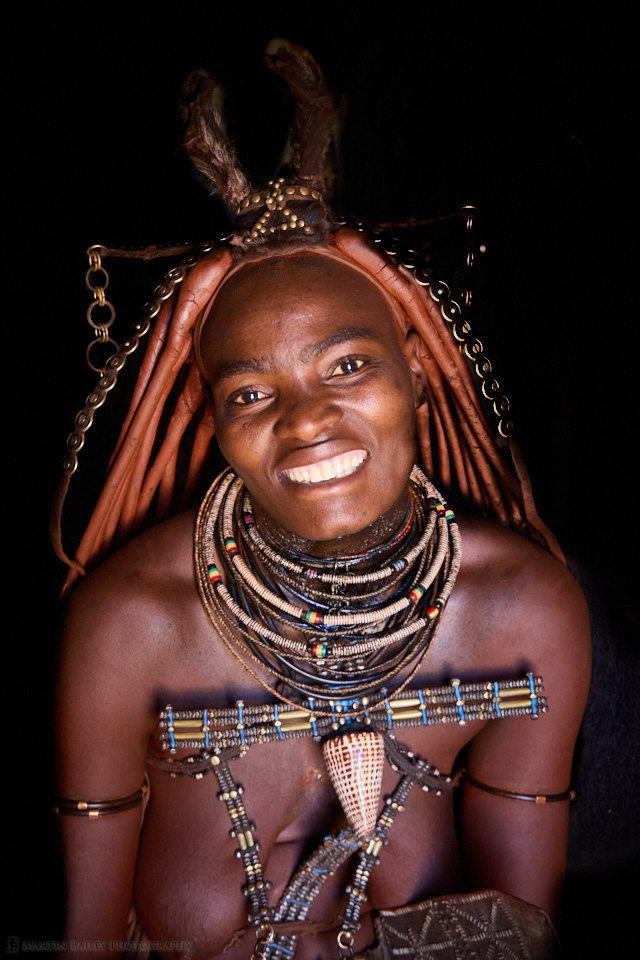
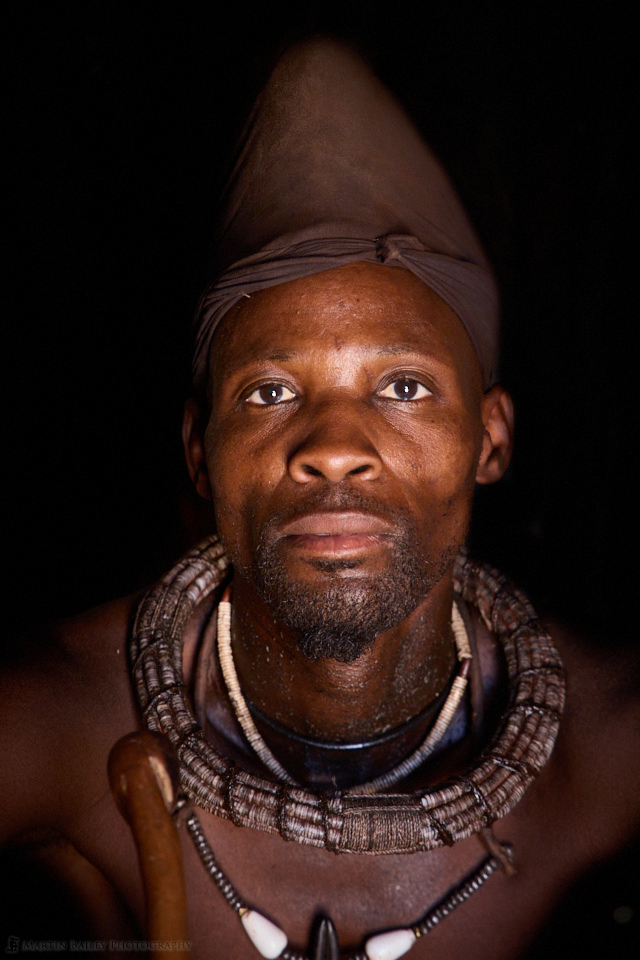
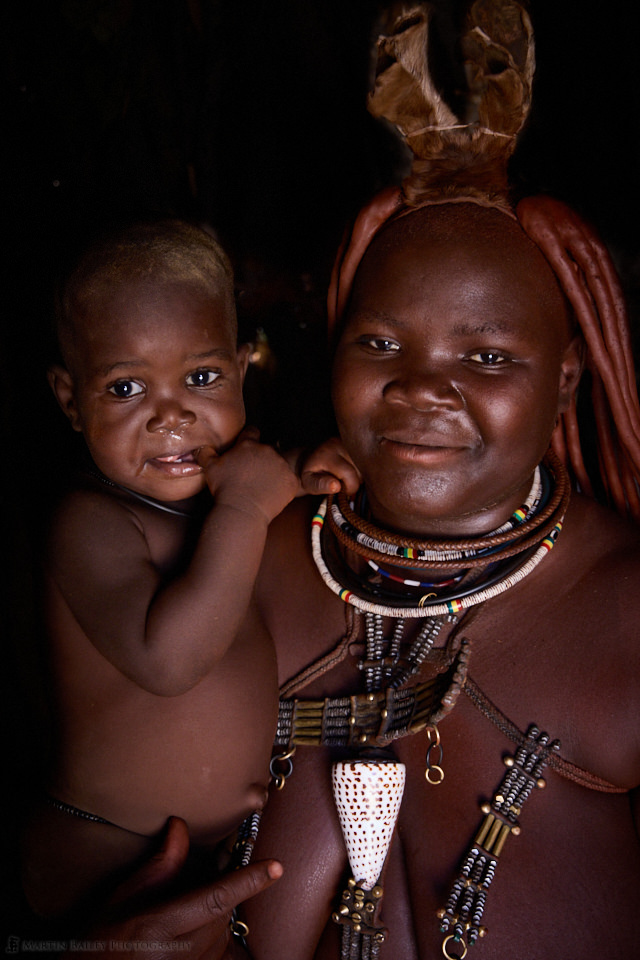
To finish our trip, we spend two days in one lodge on the South-West corner of the Etosha National Park and another two days on the East side of the park. They are both amazing lodges, and have their own wildlife, and we go out with one of their guides on the first afternoon when we arrive. We were treated on this trip to being allowed to get out of the safari vehicle and walk to within 35 meters of a family of White Rhino that were sleeping under some trees. The baby jumped up as we walked towards them, and his scurrying around woke the adults as well. Here you can see them as they walked towards us, shortly before we got back into our vehicle fifty paces or so away.
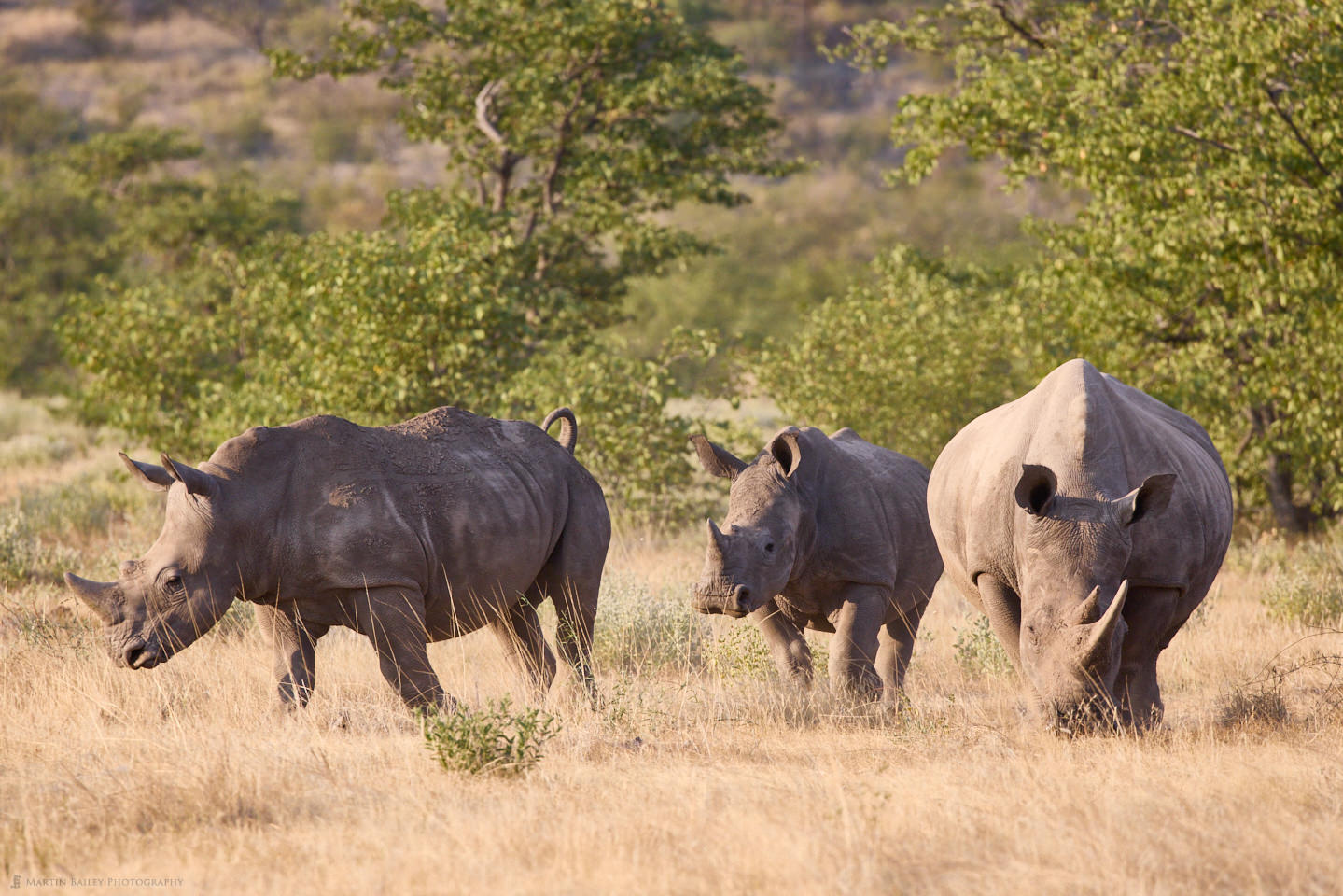
It’s awesome to see and be able to get so close to these magnificent animals. It’s possible because of the relationship that the Rhino have with the guides that spend so much time in the reserve, and also because these are White Rhino. Black Rhino, although smaller, are much more aggressive, and would probably charge us as soon as they became aware of our presence.
The rest of the photos from the tour were shot inside the Etosha National Park. As I’ve prepared for this episode, I realized that I wasn’t going to be able to finish this with just ten more photos, and I really want to wrap up this series before traveling again, so we’ll push the number of images a little, and keep storming through, continuing with what I feel is a relatively minimalist photo of an Oryx half-submerged in a waterhole. Waterholes can be busy places, so I was pleased to be able to get this without other animals encroaching on the scene.
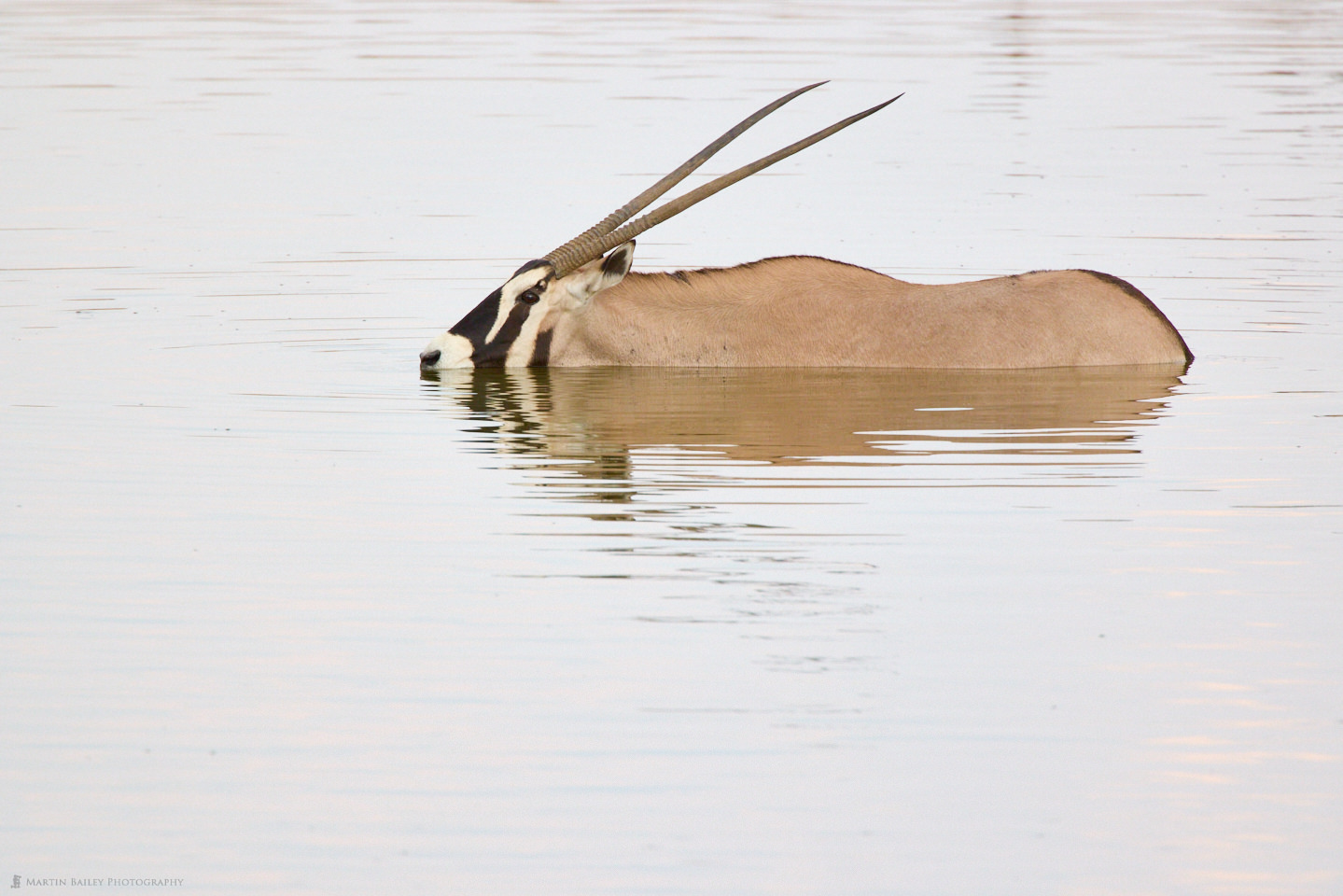
The reason I was not able to get the number of images down to just ten was that some of the scenes were saw this year, like this next image, seemed to have an almost biblical scale to them. I was torn between this and an earlier image when we saw this heard of elephants come through the trees in the distance, but I love how we can see the whole extended family of elephants here, including their children, making their way across the plain to the waterhole.
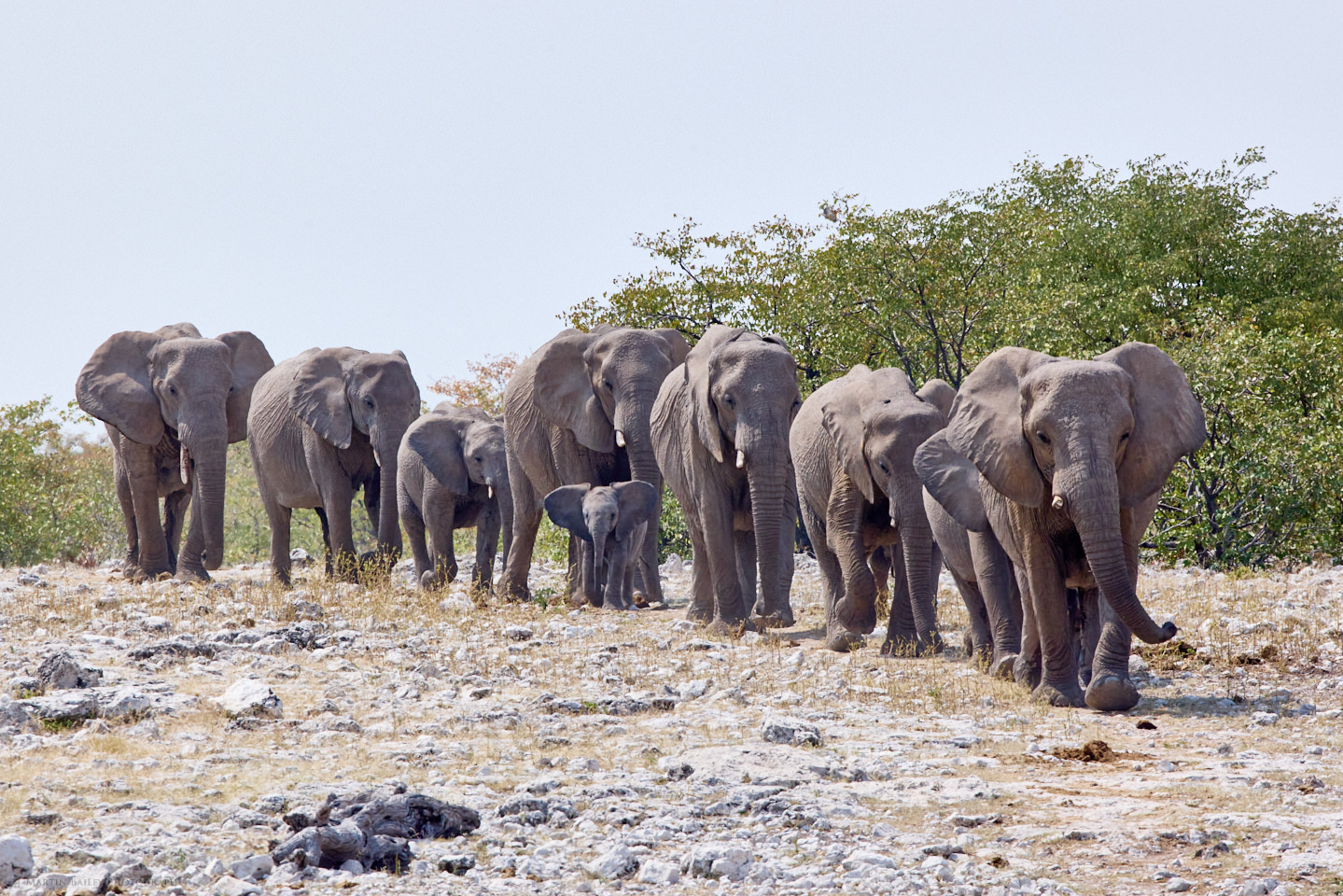
It’s lovely to see so many young elephants in their herds, as they are amazingly cute, especially when bathing in the waterhole, as we see in this next image. I’m always fascinated by how they use their trunks as they learn how to control the appendage that essentially becomes their hand to interact with the world around them.
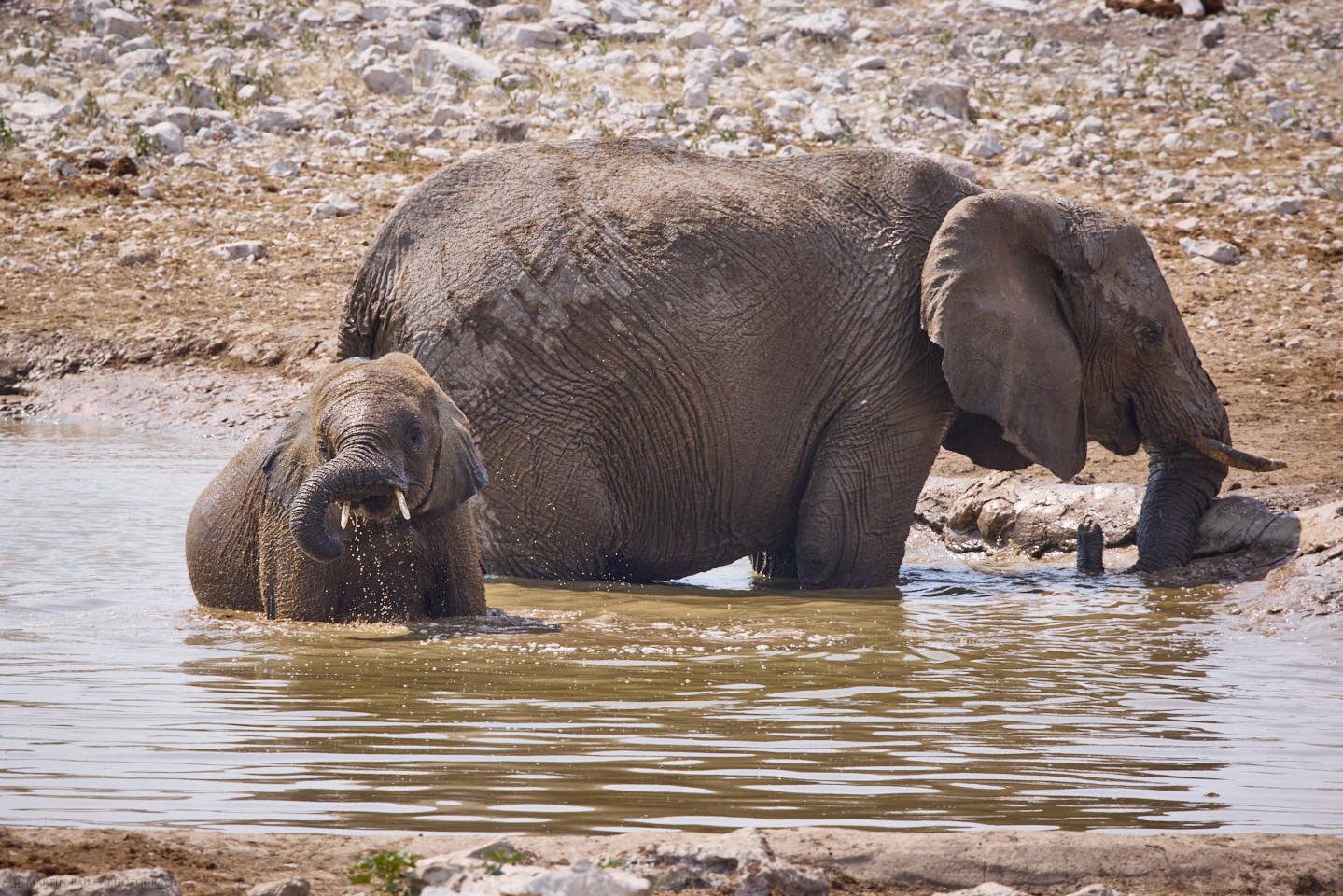
The next image was from the Okaukuejo waterhole on the second morning, which was the start of the day when we would drive through the Etosha National Park in time to leave through the gate on the East side to our lodge for the last two nights before we return to Windhoek, to return home. The zebra at waterholes are easily spooked, and often, as in this case, it’s hard to even know what spooked them, but when they decide to take off, the sound of their hooves on the rocks along with the splashing water is unforgettable.
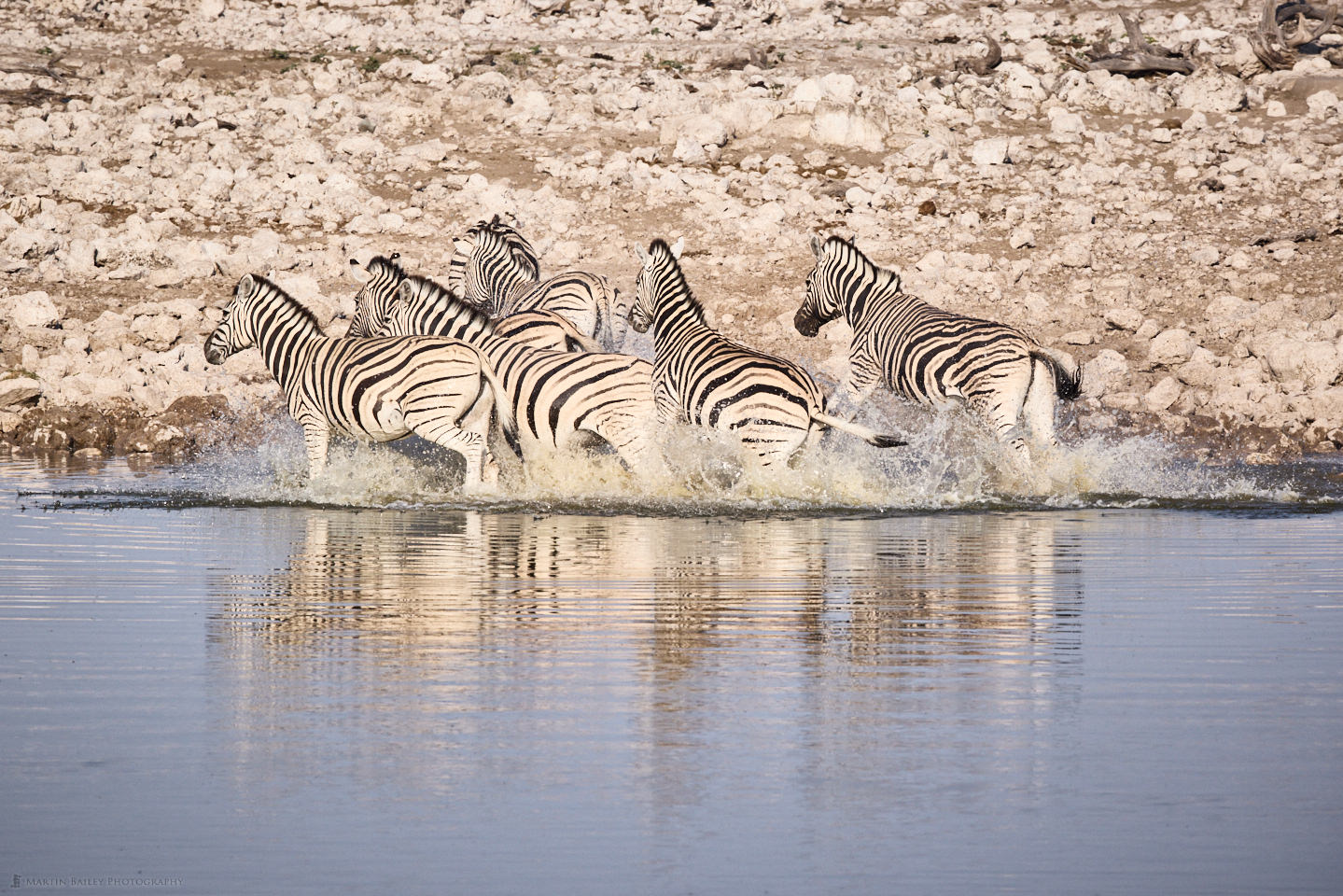
I’ve always wanted a nice shot of a Steinbok, the second smallest antelope in Namibia, and I was really happy to get this shot with the Steinbok in an idillic setting. It was in the shade under a tree, so somewhat challenging lighting, but the shadows slider helped to bring out the details, mainly because I always shoot with a technique called expose to the right, so the camera was not allowed to darken my main subject down too much, which is what would have happened if I’d relied on metering technology that hasn’t really changed in more than a hundred years. I’ve also wanted a good shot of the Dik Dik, the smallest antelope for a number of years, and we got some during the trip, but the 4KG antelope looks so strange, almost like a rodent, that I’m still trying to figure out if I actually like the resulting images.
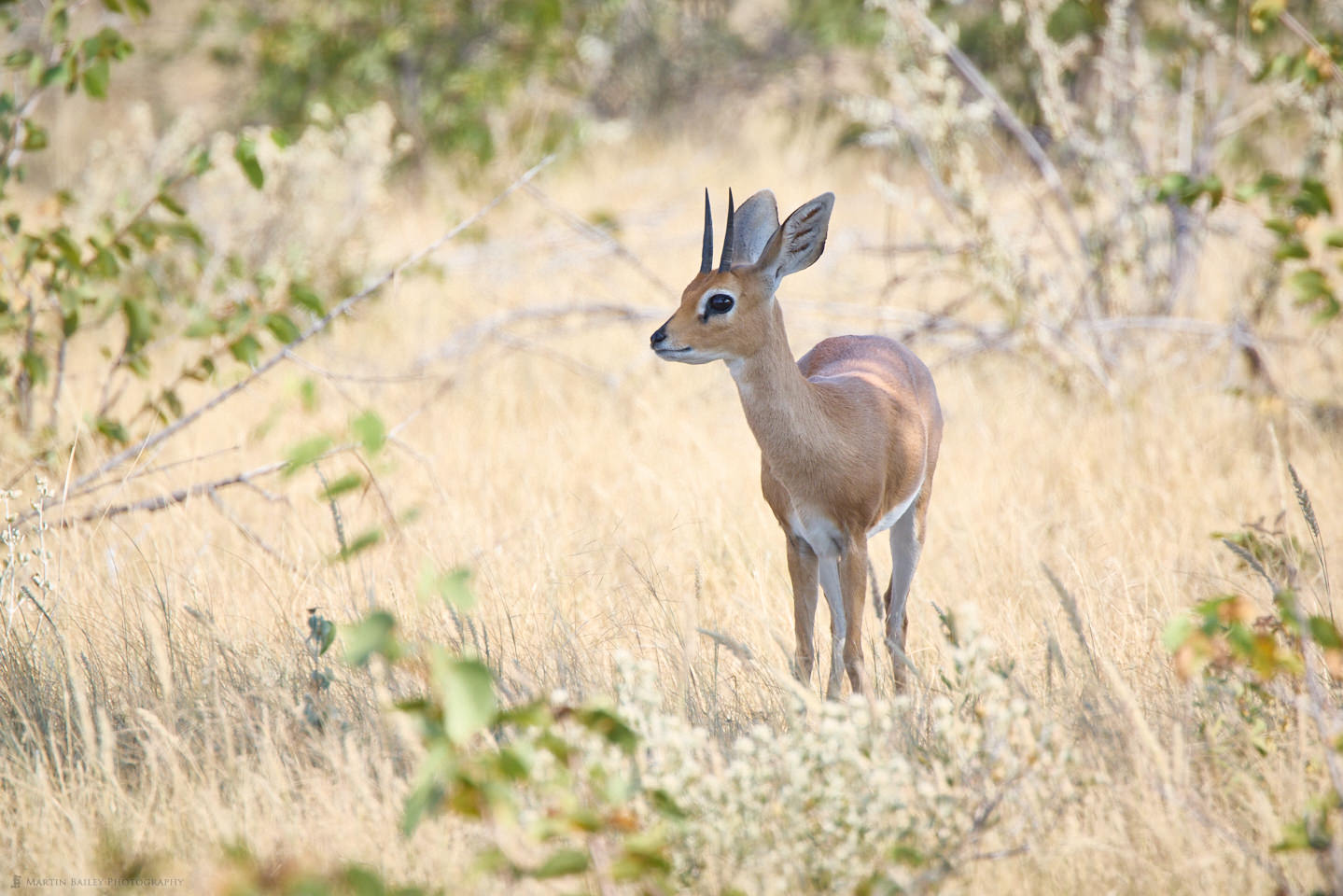
Another almost biblical scene here, with four huge bull-elephants at a waterhole, springbok in the distance, and the Etosha pan even further back. This is another stitch of three or four images, so the details at 100% is fascinating. I’ll try to print this one out large when I get some time.

I was pretty happy with this shot of a Lilac-Breasted Roller as it took flight from a tree that we’d parked by. These are beautiful birds and a lot of fun to shoot as a group, because people start to get tired of waiting for them to fly and all sorts of banter starts to fly around the vehicle.
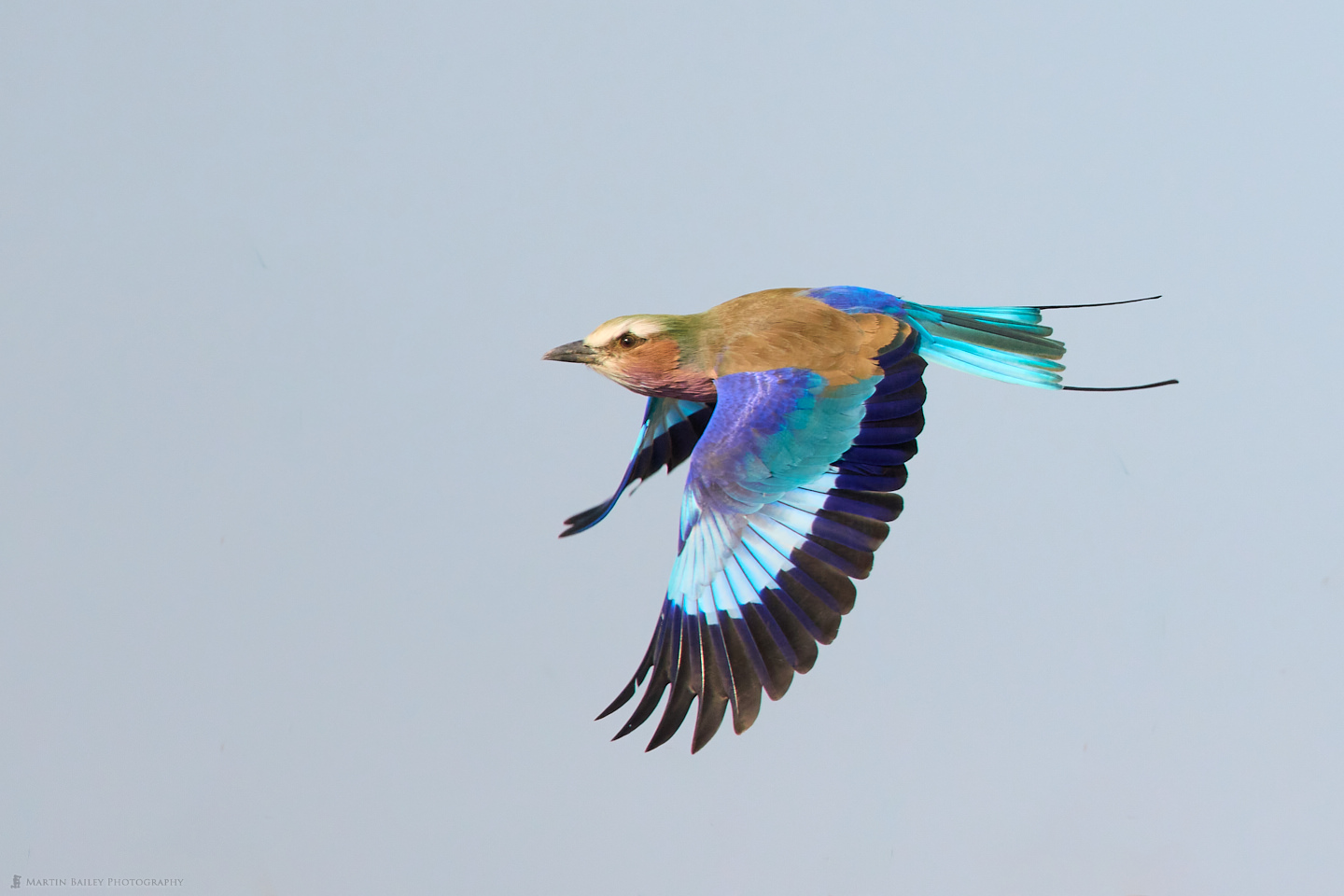
This was a lovely moment when I caught this Black-Faced Impala with a huge smile on its face, and the setting, with the soft grasses, really makes this image for me. I added a bit of a vignette to the image to focus the light on the subject a little.
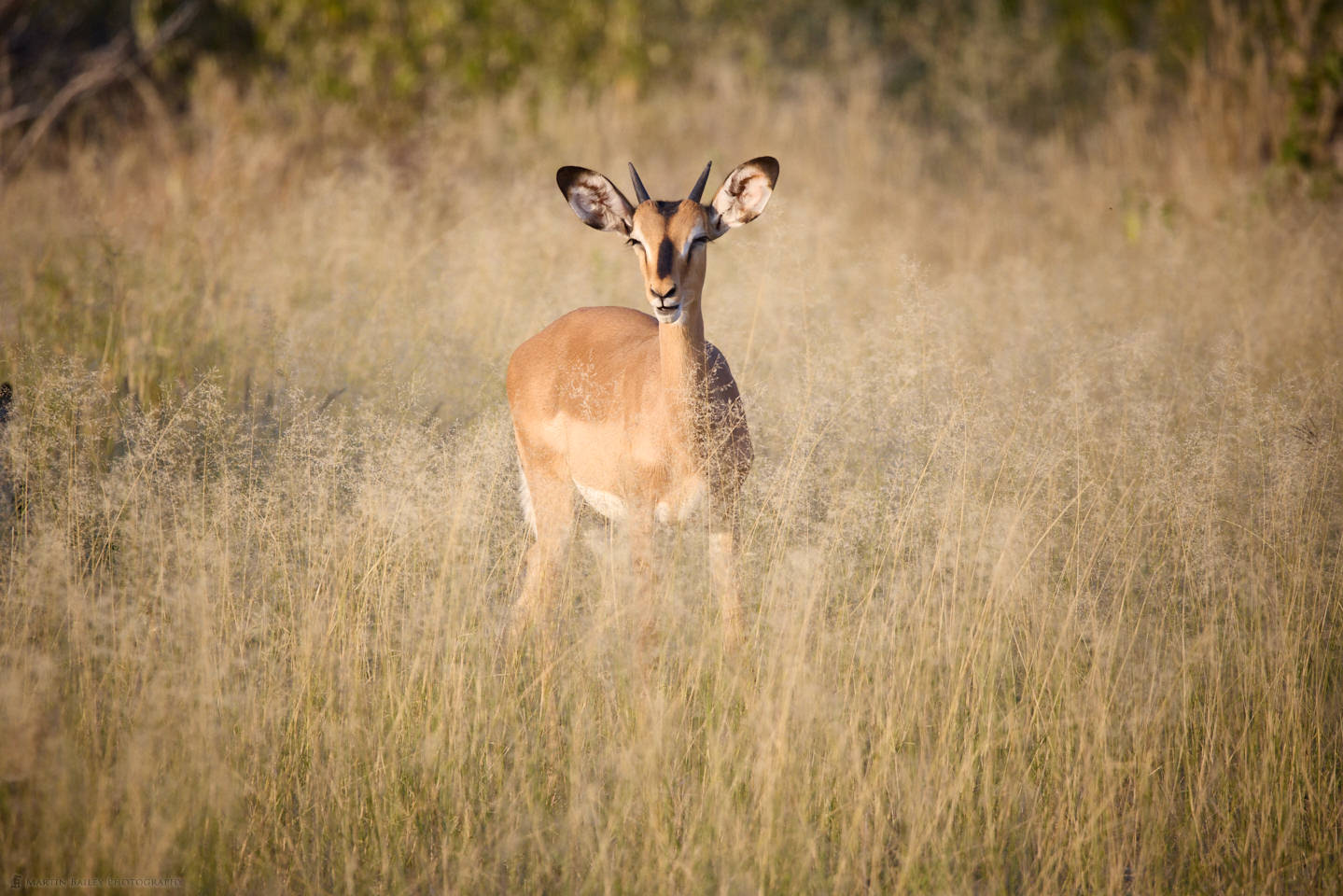
Here is another stitched panorama of another section of the Black-Faced Impala feeding in the same long grass. I’m really enjoying being able to quickly and accurately stitch images together right there in Capture One Pro and get a DNG file so I can continue to work with all the benefits of a raw format image.
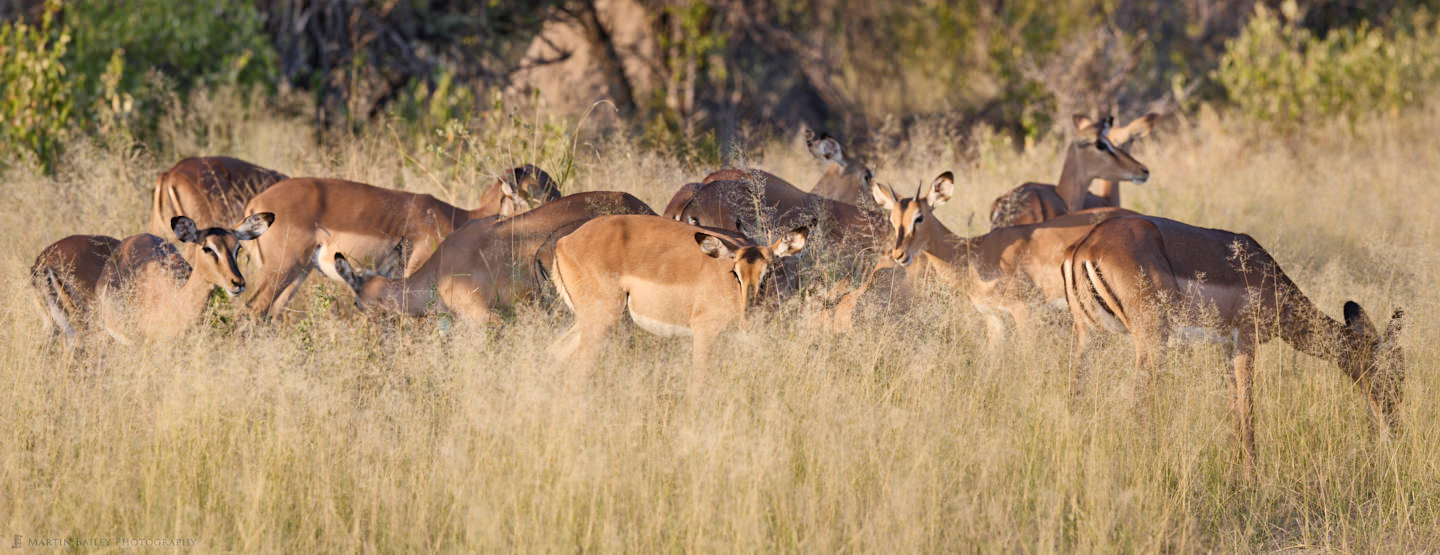
Here is a Secretary Bird strutting its stuff through the grasses of Eastern Etosha National Park. I remember photographing one of these in the Ueno Zoo in Tokyo years ago and never would have thought I’d be fortunate enough to visit Africa and photograph them in the wild like this. Such a beautiful bird.
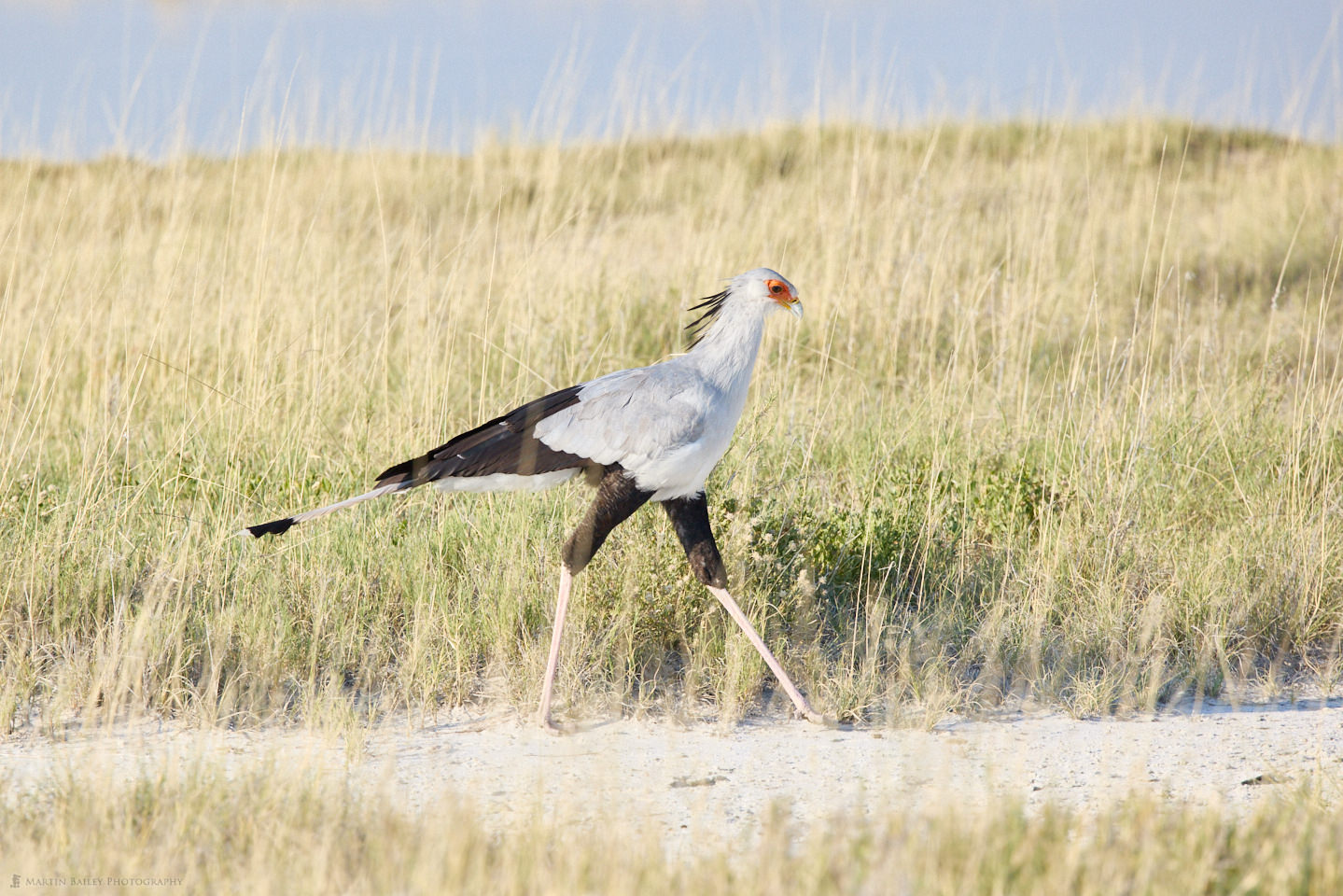
OK, so after that sprint through all of the images I wanted to share from Etosha, here is one of the last images I shot on this tour, and a fitting ending image for the series. We had literally minutes left before we had to leave the park, as you are not allowed to be in there after sundown, but we saw the sun poking through the clouds which are not common at this time of year, and we found a few giraffes that we may be able to place in the scene and raced over. We were able to position our vehicle in a way that enabled us to make this photograph.

As usual, at the end of the trip I went around the table with a digital recorder and received some lovely comments from our guests, which I’d like to play you now.
Please listen with the audio player at the top of this post to find out what the guests said about their experiences.
OK, so we’ll start to wrap it up there for this episode and series. I’ll be off the air again for a further few weeks as I travel on the second Namibia tour. When I get back I’ll try to present a shorter series only showing work that was different to this, so we should be able to move on relatively quickly. If you are considering joining me on a future Namibia tour, my 2024 trip may be my last visit, so please get your ducks in a row, and visit my tours page for details.
Show Notes
Visit our Tours & Workshops page for details of future tours: https://mbp.ac/tours
Subscribe in iTunes to get Podcasts delivered automatically to your computer.
Download this Podcast as an MP3 with Chapters.
Visit this page for help on how to view the images in MP3 files.



0 Comments